By Melissa Nase, Manager of Land Stewardship
Enjoy our October mobile field guide as you walk, hike, and play in the fall forests. See other Field Guide posts here.
Highbush Blueberry (Vaccinium corymbosum) and Blue Wood Aster (Symphotrichum cordifolium)
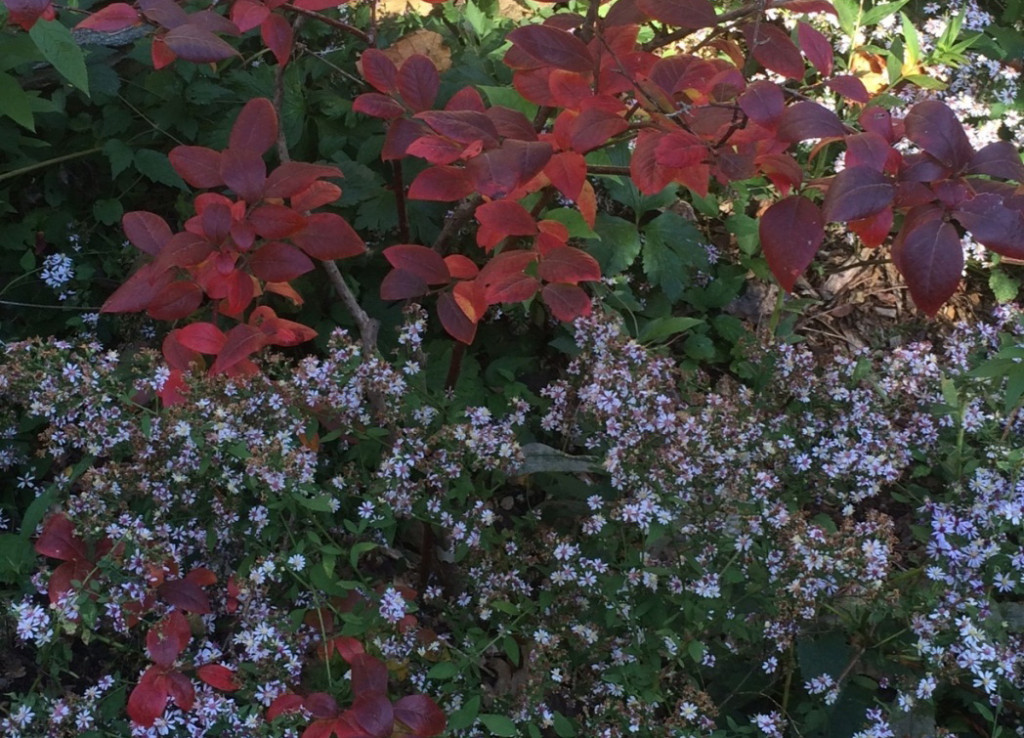 The deep red foliage of the blueberry bush is a great contrast to the lighter, more delicate blue wood aster. Both of these plants have their own unique characteristics. Highbush blueberries produce edible fruit enjoyed by humans and birds and are a nice, sculptural addition to your garden. The blue wood asters provide a mat of tiny flowers throughout the fall season. They tend to reseed vigorously. Look for them in our Sensory Garden and in our forest.
The deep red foliage of the blueberry bush is a great contrast to the lighter, more delicate blue wood aster. Both of these plants have their own unique characteristics. Highbush blueberries produce edible fruit enjoyed by humans and birds and are a nice, sculptural addition to your garden. The blue wood asters provide a mat of tiny flowers throughout the fall season. They tend to reseed vigorously. Look for them in our Sensory Garden and in our forest.
Poison Ivy (Toxicodendron radicans)
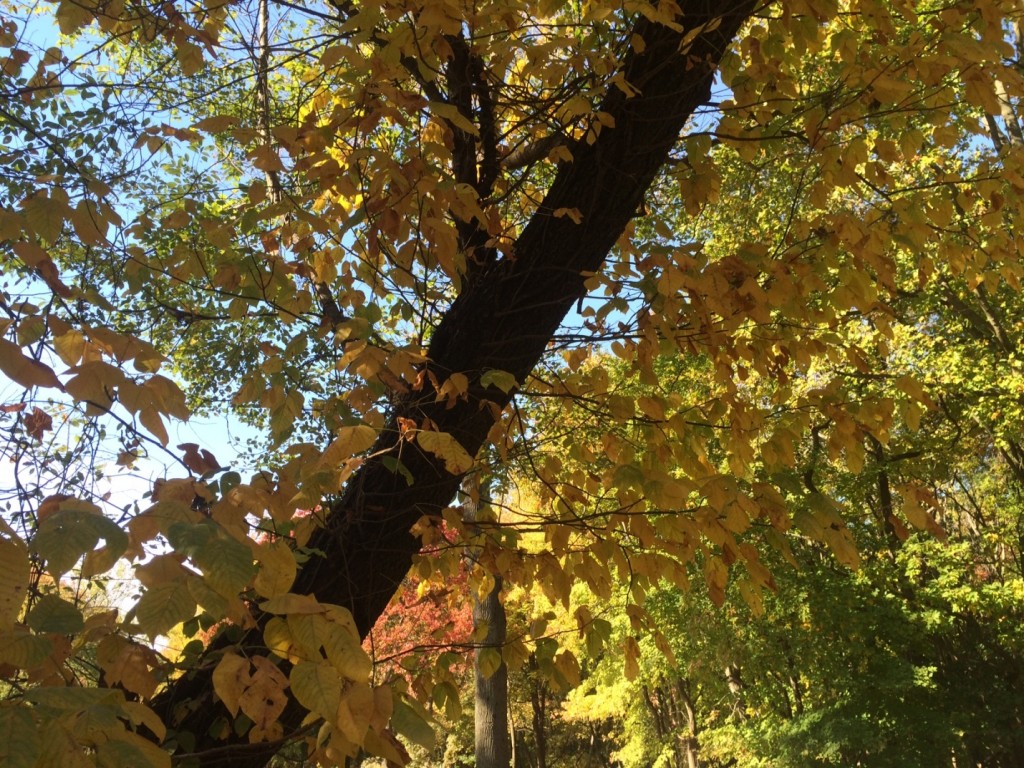 While you may have your own opinion on poison ivy, I’d like you to try to suspend your negative associations of rashes and calamine lotion and take in the beauty of the fall foliage. Poison ivy is a common native vine that you may see on the forest floor or climbing up trees. Often times, as in this photo, it’s easy to mistake the poison ivy branches for tree branches. While you may question the direct value of this plant to humans, the dark berries that it produces are an important winter food source for birds. Plus, its bright yellow to orange fall color is a great pop of color in the autumn forest.
While you may have your own opinion on poison ivy, I’d like you to try to suspend your negative associations of rashes and calamine lotion and take in the beauty of the fall foliage. Poison ivy is a common native vine that you may see on the forest floor or climbing up trees. Often times, as in this photo, it’s easy to mistake the poison ivy branches for tree branches. While you may question the direct value of this plant to humans, the dark berries that it produces are an important winter food source for birds. Plus, its bright yellow to orange fall color is a great pop of color in the autumn forest.
Aromatic Aster (Symphotrichum oblongifolius)
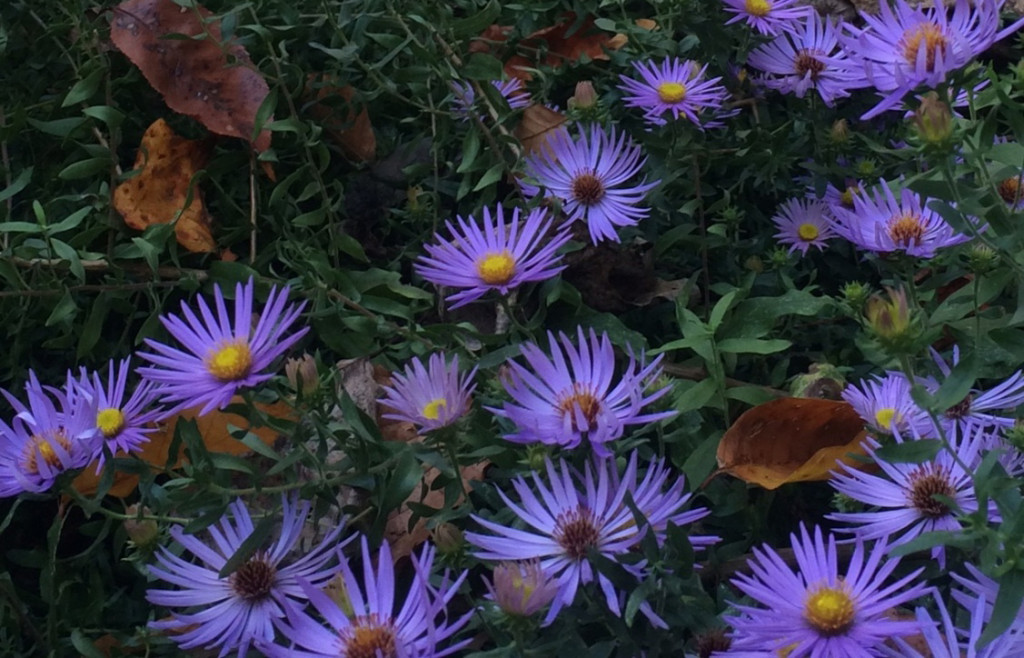 The pop of purple flowers seen in our Rain Yard are another type of aster. This one is called the aromatic aster because of the slightly spicy fragrance of the leaves when they are crushed. It produces mounds of violet flowers late summer and into fall, much to the delight of bees. Due to its mounding habit, this aster could be a nice fall season substitute for the non-native mums in your garden.
The pop of purple flowers seen in our Rain Yard are another type of aster. This one is called the aromatic aster because of the slightly spicy fragrance of the leaves when they are crushed. It produces mounds of violet flowers late summer and into fall, much to the delight of bees. Due to its mounding habit, this aster could be a nice fall season substitute for the non-native mums in your garden.
White Wood Aster (Eurybia divaricata)
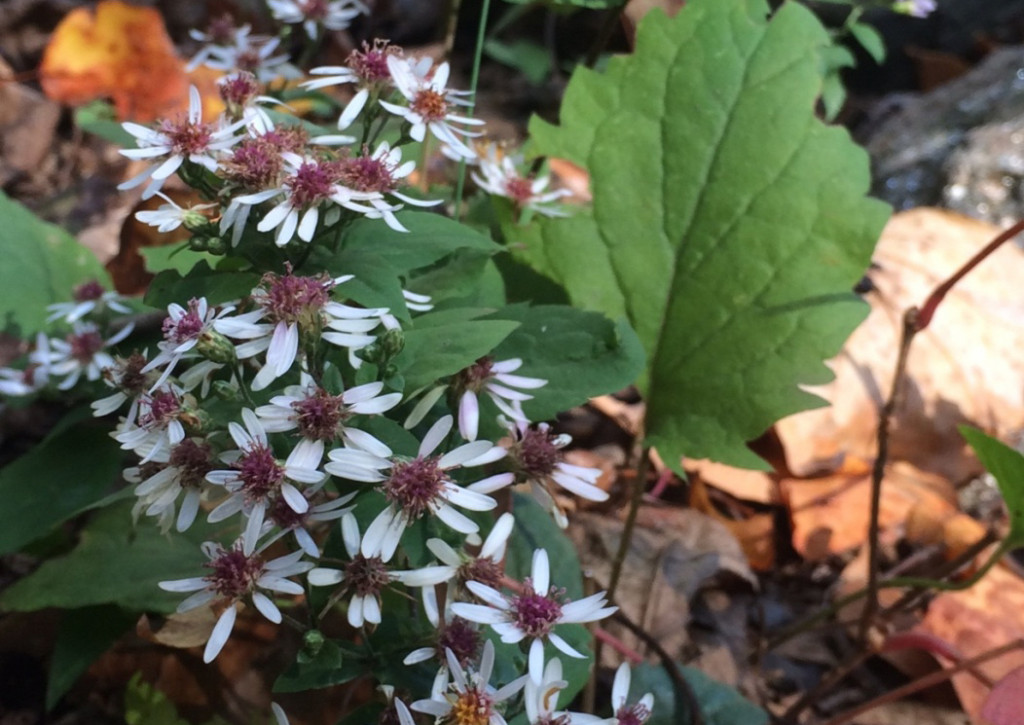 Another energetic self-seeder, you’re bound to find a few more white wood asters than you planted in the following season. This aster can be found in forests throughout the state, as it prefers drier, shadier sites.
Another energetic self-seeder, you’re bound to find a few more white wood asters than you planted in the following season. This aster can be found in forests throughout the state, as it prefers drier, shadier sites.
Witch Hazel (Hamamelis virginiana)
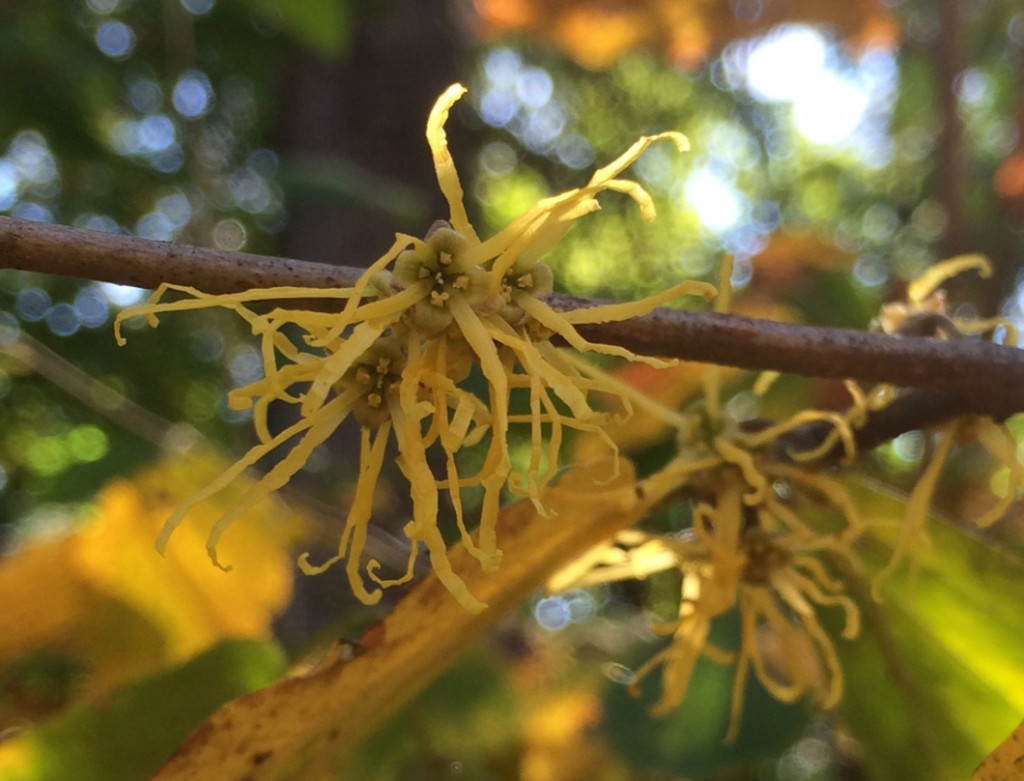 Some associate witch hazel blooms to be a sign of winter’s end, however, our native witch hazel actually blooms in fall. Yellow ribbon-like petals cover the branches as the shrub’s foliage turns yellow and drops for the season. This plant also has medicinal uses, most notably for witch hazel astringent, which is made from its bark. Witch hazel prefers moist areas, so look for this shrub near streams and other low-lying areas.
Some associate witch hazel blooms to be a sign of winter’s end, however, our native witch hazel actually blooms in fall. Yellow ribbon-like petals cover the branches as the shrub’s foliage turns yellow and drops for the season. This plant also has medicinal uses, most notably for witch hazel astringent, which is made from its bark. Witch hazel prefers moist areas, so look for this shrub near streams and other low-lying areas.
